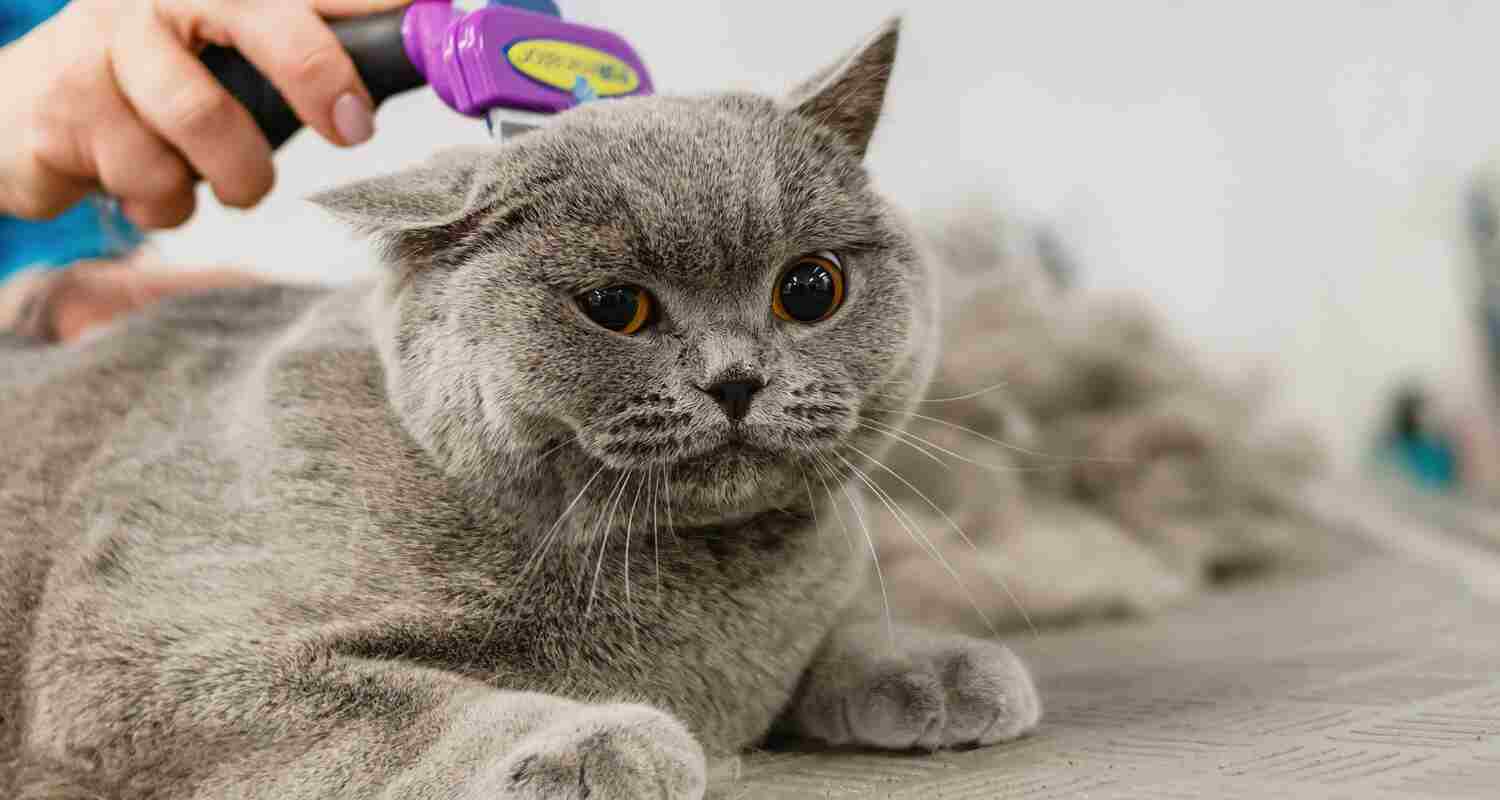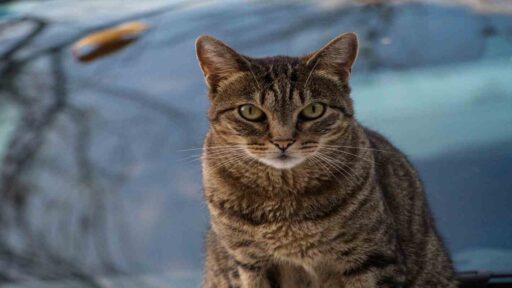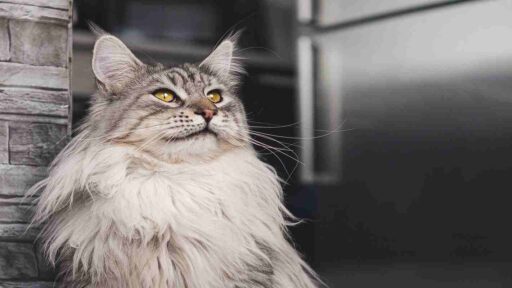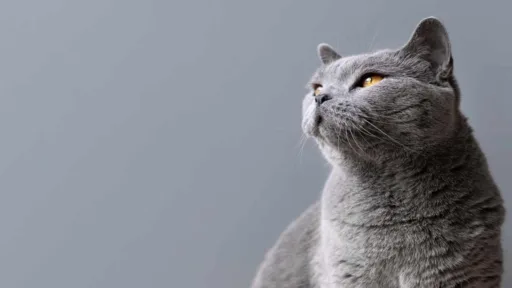Cat Breeds That Don’t Shed, Shedding in cats refers to the natural process by which a cat’s fur or hair is released or falls out periodically.
This shedding is a normal part of a cat’s life cycle and is influenced by various factors such as season, health, and breed.
Cats shed to replace old or damaged hair with new growth, which helps regulate body temperature and maintain a healthy coat.
For individuals with allergies or a preference for cleaner environments, low-shedding cat breeds are incredibly beneficial. These breeds produce minimal dander and shed less, which can significantly reduce allergic reactions in susceptible individuals. Additionally; less shedding means fewer stray hairs around the house.
Contributing to a cleaner living space and potentially easing the burden of regular cleaning and maintenance. As such, choosing a Cat breed that doesn’t shed can be a practical; and comforting solution for those with allergies or a desire for a tidier home environment.
Cat Breeds That Don’t Shed, Understanding Cat Shedding
Cats shed their fur as part of a natural and essential process. Shedding helps cats maintain healthy coats and regulate their body temperature. The shedding cycle involves the replacement of old or damaged hair with new growth.
Various factors, including changes in daylight hours (seasonal shedding), hormonal shifts, health conditions, and a cat’s breed, influence shedding primarily. Cats shed to remove dead or damaged hair, allowing new fur to grow. This shedding process helps cats adapt to temperature changes, keeping them cool in warmer weather by shedding excess fur and growing a thicker coat for insulation in colder seasons.
Regular grooming assists cats in managing their shedding process. It helps remove loose hair, preventing matting and reducing the amount of fur shed around the house. Overall, shedding is a natural and necessary aspect of a cat’s life cycle that contributes to their health and well-being.
Cat Breeds That Don’t Shed Factors influencing shedding in cats (season, health, breed)
- Season: Cats often undergo seasonal shedding, particularly during spring and fall. Changes in daylight hours trigger hormonal shifts, leading to increased shedding as cats prepare for warmer or cooler weather. This shedding helps them adapt by growing a lighter coat for summer or a denser one for winter.
- Health: A cat’s overall health significantly impacts shedding. Cats experiencing stress, nutritional deficiencies, hormonal imbalances, or underlying health issues may exhibit abnormal shedding patterns. Regular veterinary check-ups, a balanced diet, and a stress-free environment can minimize excessive shedding due to health factors.
- Breed: Different cat breeds have distinct coat types and shedding patterns. Some breeds, such as the Sphynx or Cornish Rex, are known for minimal shedding due to their hairless or short, fine coats. Breeds like the Maine Coon or Persian may shed more due to their longer, thicker fur. Genetics plays a key role in determining a cat breed’s shedding tendencies.
Understanding these factors can help cat owners manage shedding more effectively by adjusting grooming routines, providing proper nutrition, and considering environmental factors based on the cat’s breed and health status.
Characteristics of Cat Breeds That Don’t Shed
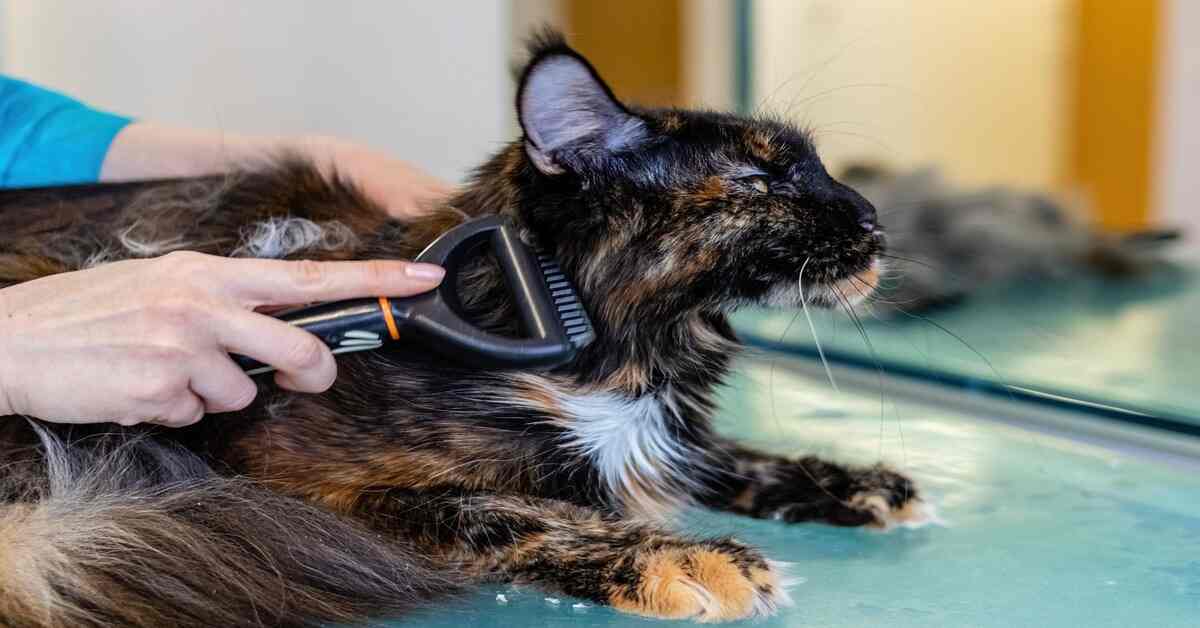
Several cat breeds that shed minimally are popular choices for individuals with allergies or those seeking cleaner environments. Here’s an overview of some of these Cat breeds that don’t shed
- Sphynx: Recognized for their hairlessness, Sphynx cats lack a traditional fur coat, reducing shedding to nearly zero. They require regular skincare but are an excellent choice for allergy sufferers.
- Bengal: With short, dense fur that requires minimal grooming, Bengals shed less compared to many other breeds. Their coat is known for its distinctive leopard-like appearance.
- Russian Blue: These cats have a short, plush coat that sheds minimally. Their fine, dense fur produces fewer allergens, making them a suitable choice for allergy-prone individuals.
- Cornish Rex: Known for their unique curly coat, Cornish Rex cats shed less due to their fine, short fur. Regular grooming helps maintain their coat’s health and minimizes shedding.
- Devon Rex: Similar to the Cornish Rex, Devon Rex cats have a short, curly coat that sheds less than breeds with longer fur. Their coat requires minimal grooming.
- Siberian: Despite their long fur, Siberian cats are considered hypoallergenic because they produce lower levels of the Fel d 1 protein, a common allergen in cats. They shed less than expected for their coat length.
- Siamese: While Siamese cats have short fur, they shed less compared to many other breeds. Their coat’s texture and reduced undercoat contribute to minimal shedding.
These breeds vary in appearance, temperament, and grooming needs, but they share the common trait of shedding less, making them attractive choices for individuals seeking Cat breeds that don’t shed
Several factors contribute to reduced shedding in cats:
- Coat Type: Cats with certain coat types tend to shed less. Breeds with shorter, denser fur often shed less compared to long-haired breeds. Additionally, cats with single-layered coats or those with less undercoat tend to shed minimally.
- Coat Length: Cats with shorter coats generally shed less due to having fewer hairs. Breeds with shorter hair, such as the Sphynx or Siamese, often produce less shedding compared to breeds with longer, thicker coats like Maine Coons or Persians.
- Grooming Habits: Regular grooming plays a crucial role in managing shedding. Cats that receive frequent brushing and grooming tend to shed less because loose or dead hair is removed before it falls out naturally. Regular grooming sessions can prevent excessive shedding and reduce the amount of hair shed around the house.
- Genetics: A cat’s genetic makeup influences its shedding tendencies. Breeds with specific genetic traits, such as having less undercoat, finer hair, or a particular texture to their fur, may naturally shed less compared to other breeds.
Understanding these traits can help cat owners select breeds or implement grooming routines that minimize shedding and maintain a cleaner environment within the home.
Cat Breeds That Don’t Shed Profiles of Top Cat Breeds that don’t shed
Sphynx
The Sphynx cat breed is renowned for its distinct lack of traditional fur, known as hairlessness. Contrary to the perception of being completely hairless, they have a fine layer of downy fur that feels like suede to the touch. Their lack of a full coat is due to a genetic mutation that affects the production of hair, resulting in their unique appearance.
Maintenance requirements for Sphynx cats differ from other breeds due to their lack of fur. While they don’t require grooming in the traditional sense, their skin needs regular care. Bathing to remove skin oils and dirt is crucial, usually once a week or as needed, to prevent buildup that could cause skin issues. Additionally, because they lack the insulation of fur, Sphynx cats might need protection from extreme temperatures to keep warm.
Their hairlessness gives them a distinctive look and requires specific attention to their skin health. Owners should also be mindful of sun exposure, as their lack of fur makes them susceptible to sunburn. Despite their unique appearance and care needs, Sphynx cats are known for their affectionate nature, playful demeanor, and love for human companionship.
Bengal
The Bengal cat breed stands out as a short-haired feline with minimal shedding tendencies. Their sleek, short coat requires relatively little grooming compared to longer-haired breeds. Regular brushing helps reduce loose hair and keeps their coat in optimal condition, but their shedding is notably less compared to breeds with thicker or longer fur.
In terms of temperament, Bengals are known for their active and energetic nature. They’re highly intelligent, curious, and enjoy interactive play. They often form strong bonds with their human families and are quite affectionate. Their playful demeanor makes them excellent companions for households with active lifestyles.
Regarding care needs, Bengals thrive on mental and physical stimulation. Providing them with engaging toys, puzzle feeders, and interactive play sessions helps fulfill their need for mental enrichment and exercise. Additionally, offering scratching posts or cat trees satisfies their natural urge to climb and scratch, benefiting both their physical health and mental stimulation.
Regular veterinary check-ups, a balanced diet, and ensuring they have a stimulating environment are essential for the well-being of Bengal cats. Their social and active nature makes them a delightful addition to households that can provide the attention and engagement they crave.
Russian Blue
The Russian Blue cat boasts a dense, short coat that feels plush and luxurious to the touch. Their coat is characterized by a unique bluish-grey color that shimmers in the light, contributing to their distinctive appearance. This dense, double-layered coat doesn’t shed excessively, making it a low-maintenance breed in terms of grooming. Regular brushing helps maintain their coat’s health and minimizes shedding, but they naturally shed less compared to many other breeds.
In terms of personality traits, Russian Blues are known for their gentle and reserved nature. They tend to form strong bonds with their human companions but might initially be cautious around strangers. They’re intelligent, and observant, and often display a quiet elegance in their demeanor. While they might not be as vocal as some other breeds, they communicate their needs and affection through subtle cues.
As pets, Russian Blues make wonderful companions for individuals or families seeking a calm and affectionate feline friend. They thrive in environments where they receive love and attention without feeling overwhelmed. Their peaceful nature and tendency to form deep bonds with their human companions make them excellent pets for those looking for a loyal and undemanding cat. Additionally, their low-shedding coat and reserved yet loving temperament contribute to their suitability as indoor companions for various households
Cornish Rex
The Cornish Rex is renowned for its distinctive curly coat, which sets it apart from many other breeds. Their wavy, soft fur lacks the typical guard hairs found in most cat breeds, giving them a unique and almost furless appearance. This curly coat sheds considerably less compared to breeds with traditional fur, making the Cornish Rex an attractive choice for those seeking cat breeds that don’t shed. Despite their shorter coat, they might require occasional grooming to prevent matting and maintain the health of their unique fur.
When it comes to care, Cornish Rex cats thrive on attention and interaction. Their active and playful nature makes them well-suited for families. They enjoy being involved in household activities and forming close bonds with their human companions. Providing toys and engaging them in play helps satisfy their need for mental stimulation and physical activity.
Their friendly and affectionate disposition makes them highly compatible with families, including children and other pets. However, their sensitivity to cold might require them to have a warm environment, especially during cooler seasons, due to their lack of a dense fur coat. With proper care and attention, cornish rex cats can make delightful additions to family households, bringing joy with their unique appearance and loving personalities.
Care and Maintenance Tips for Cat Breeds That Don’t Shed
Grooming Routines for Reducing Shedding in Low-Shedding Breeds:
- Regular Brushing: Even low-shedding breeds benefit from regular brushing to remove loose hair and distribute natural oils, promoting a healthy coat. Use appropriate brushes suited to the cat’s coat type, such as soft bristle brushes or grooming gloves.
- Bathing: Occasional baths with cat-specific shampoos can help remove excess hair and reduce shedding. Use lukewarm water and gentle products to avoid skin irritation.
- Professional Grooming: Periodic visits to professional groomers for baths, nail trims, and thorough grooming can further reduce shedding and maintain coat health.
Dietary Considerations for Healthier Coats:
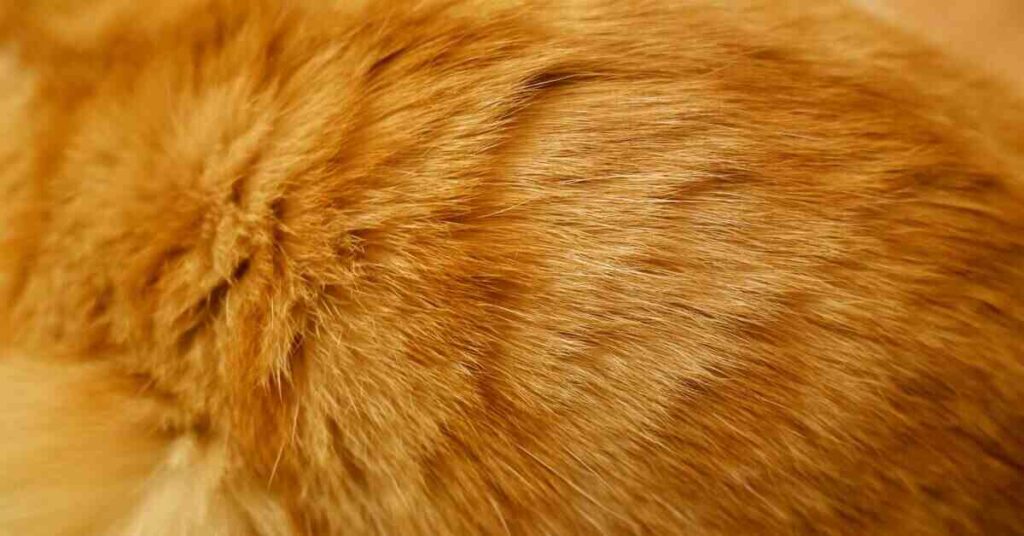
- Balanced Diet: Ensure your cat’s diet includes high-quality, protein-rich food to support coat health. Omega-3 fatty acids found in fish oil or specific cat foods can improve skin condition and reduce shedding.
- Hydration: Ample water intake is crucial for overall health and a shiny coat. Wet food or water fountains can encourage hydration.
Environmental Factors Affecting Shedding and Management:
- Temperature and Humidity: Extreme temperatures can affect shedding. Maintain a comfortable indoor environment, especially for cat breeds that don’t shed and might be more sensitive to temperature changes.
- Allergens and Indoor Air Quality: Regular cleaning, using HEPA filters, and minimizing dust and dander can help reduce allergens and shed hair in the home.
- Stress Management: Stress can exacerbate shedding. Provide a stress-free environment, enriching activities, and safe spaces for your cat to reduce anxiety levels.
By incorporating these grooming routines, dietary considerations, and managing environmental factors, you can significantly reduce shedding in Cat Breeds that don’t shed and maintain a healthier, cleaner environment for both you and your feline companion.
Choosing the Right Cat Breeds That Don’t Shed
Factors to Consider Before Selecting a Cat Breeds That Don’t Shed :
- Lifestyle Compatibility: Assess your lifestyle and living situation. Consider the time you can dedicate to grooming, your activity level, and the space available for the cat.
- Allergies: If allergies are a concern, spend time with the specific breed to ensure compatibility. Remember, no cat breed is completely hypoallergenic, but some may produce fewer allergens.
- Temperament Match: Research the breed’s temperament and energy levels to ensure it align with your preferences and household dynamics.
Adoption vs. Purchase Considerations:
- Adoption: Consider adopting from shelters or rescue organizations. Many Cat Breeds That Don’t Shed are available for adoption, offering a chance to provide a loving home to a cat in need.
- Purchase from Reputable Breeders: If purchasing from a breeder, research thoroughly. Ensure the breeder is reputable, prioritizes the cats’ welfare, and provides proper care and health certifications.
- Consider Rescue Groups for Specific Breeds: Breed-specific rescue groups might have the cat you desire. They often have a wealth of information about the cat’s history and needs.
Taking these factors into account can guide your decision-making process, ensuring that the chosen low-shedding cat breed aligns with your lifestyle, preferences, and ethical considerations, whether through adoption or purchase.
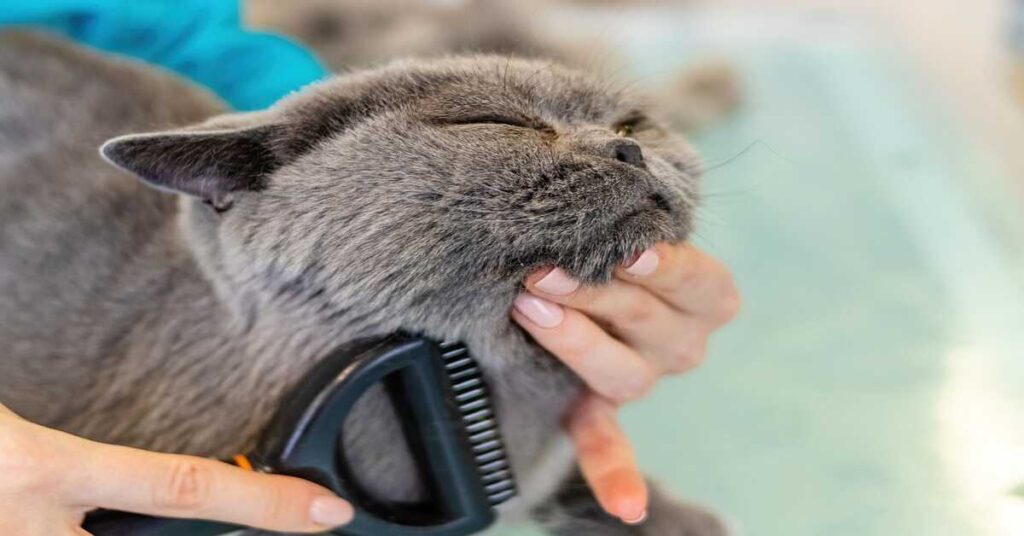
Cat Breeds That Don’t Shed FAQs
What Makes Cats Not Shed?
Cats that shed less or Cat Breeds That Don’t Shed have specific genetic traits and coat characteristics. These include:
- Reduced Undercoat: Cats with minimal shedding often have less dense undercoats. The undercoat is the layer of fur closest to the skin, and breeds with a less prominent or sparse undercoat tend to shed less.
- Coat Texture: Certain cat breeds have coats with unique textures, like the curly fur of the Cornish Rex or the fine, short fur of the Siamese. These textures might contribute to reduced shedding compared to breeds with thicker or longer fur.
- Genetic Factors: Genetics plays a crucial role. Some breeds have been selectively bred for specific coat traits that result in minimal shedding. These genetic characteristics can include having fewer hair follicles, producing less dander, or shedding less frequently.
- Grooming Habits: Cats that groom themselves meticulously might naturally shed less as they manage their fur more effectively. Additionally, regular grooming from their owners can remove loose hair before it sheds, reducing the amount of fur scattered around the home.
- Health and Diet: A healthy diet with proper nutrients can contribute to a cat’s overall coat health, potentially reducing excessive shedding. Cats with underlying health issues might experience more shedding due to stress or imbalances in their systems.
While no cat is entirely non-shedding, breeds with these characteristics tend to shed less compared to others, making them attractive options for individuals seeking cats that leave behind minimal fur.
Can You Get Non Shedding Cats?
While there’s no such thing as a completely non-shedding cat, some breeds are known for shedding significantly less than others. Breeds like the Sphynx, Cornish Rex, and Russian Blue, among others, have minimal shedding tendencies due to their unique genetic traits and coat characteristics. These cats produce less dander or have hair that is less likely to shed, making them popular choices for individuals with allergies or those seeking cleaner environments. So while you can’t find a cat that doesn’t shed at all, these breeds shed far less compared to many others, which might make them a suitable option for those looking for cats with minimal shedding.
What fluffy cats don’t shed much?
Some fluffy cat breeds shed less than others despite their luxurious coats. Here are a few fluffy cat breeds known for minimal shedding:
- Siberian: Known for their thick, fluffy coats, Siberian cats surprisingly shed less compared to many other long-haired breeds. They also produce lower levels of the Fel d 1 protein, reducing allergens.
- Maine Coon: Despite their large size and thick fur, Maine Coons shed moderately. Regular grooming helps manage their shedding.
- Norwegian Forest Cat: These cats have a dense, water-resistant double coat that sheds less compared to some other long-haired breeds. They require grooming to minimize shedding.
- Birman: Known for their semi-long fur, Birmans shed less due to their silky coat texture and lower undercoat volume. Regular brushing helps maintain their coat and manage shedding.
While these fluffy breeds shed less than some other long-haired cats, it’s essential to note that grooming and maintenance play crucial roles in managing shedding, regardless of the breed. Regular grooming routines can significantly reduce the amount of loose fur around the house.
Do Cats Shed Bad?
Cats shedding isn’t inherently “bad,” as it’s a natural and necessary process for them. Shedding helps cats get rid of old or damaged hair and allows new fur to grow. However, excessive shedding might be undesirable for some owners, especially if they have allergies or prefer a cleaner environment. Excessive shedding can also be a sign of underlying health issues or poor grooming habits.
Regular grooming, a balanced diet, and managing potential stressors can help minimize shedding. While shedding itself isn’t harmful, excessive shedding might warrant attention to ensure the cat’s health and comfort, as well as maintaining a cleaner living space for the owner.

